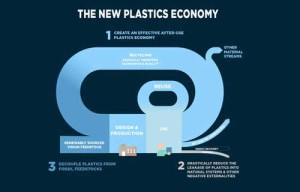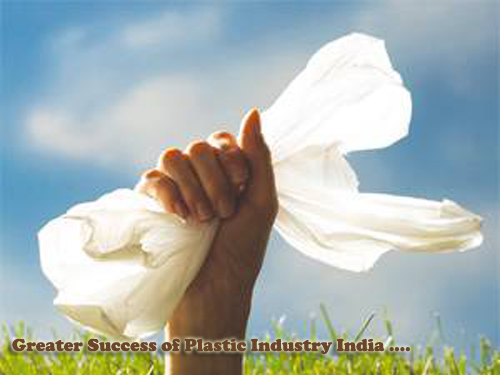More plastic than fish in the ocean (by weight) by 2050. 95 percent of plastic packaging’s potential value lost after its first use. Only 14 percent of plastic packaging collected for recycling. Global waste disposal systems so challenged that nearly a third of plastic waste doesn’t even make it to the landfill, and instead is littered on land or swept into the ocean.
These are some sobering findings of “The New Plastics Economy: Rethinking the Future of Plastics ,” a report released last month by the Ellen MacArthur Foundation in partnership with the World Economic Forum intended to move the circular economy a step closer from theory to practice.

The enormous waste of embedded value in plastic packaging has been going on for generations with scant attention often paid as landfills overflowed with discarded single use bottles, bags, plates and wrappers. The emerging awareness of the scope of ocean plastic debris and the potential for plastics to concentrate and transfer toxic chemicals into the marine food web and human diets finally may provoke enough concern from companies and policy makers to make ubiquitous plastic packaging a pilot program for the circular economy where it never becomes waste, but serves as nutrients for new products.
The report charts a path for transition to a circular path by first focusing on fostering a robust after-use economy through improving the economics and yield of recycling, reuse and composting. Reducing the dumping of waste onto land and oceans and decoupling plastics from fossil fuels are also important factors, but the report emphasizes that drastically improving the quality and economics of recycling, reuse and composting, is the cornerstone and first priority for a new plastics economy.
A five-point plan is proposed: engaging value chain players; forming a global plastics protocol to agree on design guidelines for optimal material use and processing systems; focusing technological innovation on projects with the most potential to improve materials sorting and processing at scale; promoting stronger secondary markets for collected materials; and exploring “the enabling role of policy” such as material, landfill or incineration bans and producer responsibility laws.
This effort by the Ellen MacArthur Foundation and its allies has a number of encouraging elements going for it, but the path is also fraught with challenges. Much of this has been proposed before in various forms.
On the hopeful side, Europe seems primed to move. In December, the European Commission approved a circular economy package including $6.08 billion for improved waste management.
Greenhouse gas emissions by the plastics sector are expected to grow to 15 percent of the global annual carbon budget by 2050 so recycling can play a key role helping governments and global brands with GHG reduction. Increased recycling can reduce GHG emissions. Incineration and energy recovery, often promoted as alternatives to recycling, release the carbon embedded in plastics.
The new data showing far more plastic waste is eluding collection and being swept into oceans than previously believed is elevating public concern about it from nuisance to potential global threat. About 8 million metric tons of plastic are estimated end up in the ocean each year, much of it packaging. Without significant intervention, that will result in a ton of plastic for every three tons of fish by 2025, and more plastic than fish by weight by 2050.
A few big consumer brands and value chain players are beginning to show interest. Ikea, Kimberly Clark, Marks & Spencer and Unilever were involved in the New Plastic Economy report, as were other critical parts of the packaging life cycle, such as Dow and Dupont, who make polymer packaging resins; packaging producer Amcor; and Suez and Veolia, which provide waste collection and recycling services.
It’s an appealing vision of potential new business opportunities for companies that could unlock job growth through advanced repair and manufacturing, and enhanced waste management and secondary materials production.
However, there are just as many challenges. The apparent energy seems centered mostly around European governments and retailers so far. In the U.S. there’s no evidence of strong promotion of a circular agenda by the EPA or federal policy makers equivalent to the EU’s action. U.S. retailers outside of the beverage sector remain largely silent on responsibility for the ocean debris mess, packaging waste and low recycling rates.
The report’s proposed answer is ambitious — a global plastics protocol, where business and governments align around the best materials and practices. But is it realistic? It’s hard enough to get cities in the same county to collect and process the same materials, let along most countries.
But beneath polite phrases such as “alignment” lie hard choices such as banning certain plastic materials, which the plastics industry has opposed. While some municipalities and nations have banned various plastics, reaching global agreement on preferred materials is likely too much to expect. Many developing nations are preoccupied with providing basics such as food and shelter and lack post-consumer collection and recycling systems, or the resources to carry out existing laws.
Website: www.greenbiz.com





